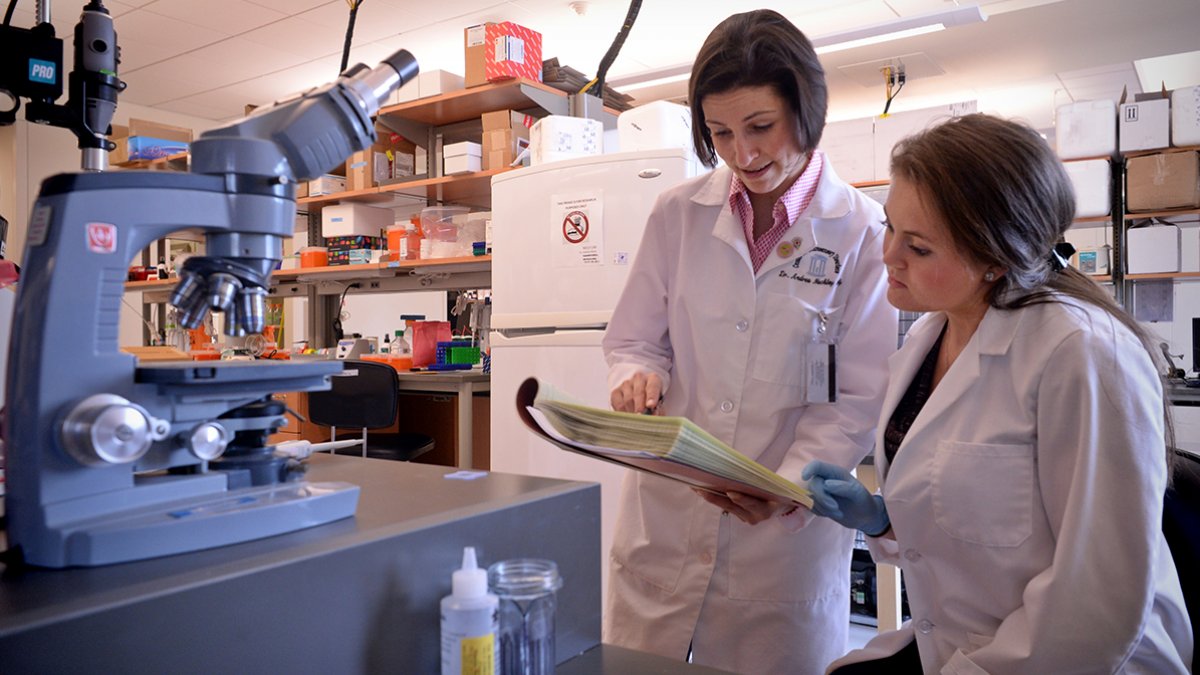Research double-time
Graduating senior Olivia Eskew explains her research journey at Carolina.

Olivia Eskew’s research interests took her from the Galápagos Islands to conducting research in a faculty member’s laboratory that may help people with chronic pain.
She will graduate in May, having been named second author on two research studies. Water quality in a setting where clean water is in short supply was the focus of one project. The other project involves innovative basic science research that may help people with chronic pain. Eskew will present her pain research at Carolina’s Celebration of Undergraduate Research on April 14.
The senior from Winston-Salem answered five questions about her experiences:
1. What drew you to research?
As an undergraduate, I had already been a part of a couple of different research projects involving water quality analysis. I knew I had an interest in public health but I am a biology major so, I wanted to gain some research experience in biology. I had a strong interest in neurobiology due to the lack of information available in that field and the rate at which the field is developing. My mom has always been very encouraging in terms of outside research experience because of her positive and successful experiences as an undergrad at UNC.
2. What did you do in the Galápagos Islands and what are the outcomes?
The spring of my sophomore year, I studied abroad in Ecuador and the Galápagos Islands through UNC’s Environmental Sciences department. I took marine science courses and the last six weeks, I was in an independent research project with Dr. Valeria Ochoa. The project was to produce a baseline water quality analysis of the drinking water on San Cristóbal in the Galápagos. The research just recently has been published and further research objectives and collaborations are being established between UNC and the Universidad San Francisco de Quito in the islands.
Our findings were published in “A baseline analysis of the quality of water resources on San Cristóbal Island, Galápagos,” Valeria Ochoa-Herrera, Olivia Eskew, Katie Overbey, Fecundo Palermo; January 2014 and presented at a conference on International Perspective on Water Resources and the Environment in Quito, Ecuador.
3. What was fun and what was challenging about the Galápagos experience?
Working in the Galápagos was an amazing experience! Not only is the landscape beautiful, but the local community was quite supportive and interactive. I had lived there for four months, so the majority of the locals knew what your project was and the outcomes. My host family was quite interested to hear about the results of the drinking water quality because it could potentially have a direct impact on their daily lives.
Sometimes the work was taxing in terms of actually finding the reservoirs because there wasn’t any prior documentation that we were able to access from the local municipality. Therefore, it was a bit of a search to find the drinking water sources through the highlands on the island!
4. How did you join Dr. Nackley’s pain research team and how might the findings possibly contribute to prevention or treatment for pain?
I received an email from the undergraduate biology listserv and set up an interview with Jane Hartung, a graduate student in Dr. Andrea Nackley’s lab, a member of the Center for pain Research and Innovation, where I currently work. I began working in the lab in January 2013. That spring semester, I assisted Jane on one of her projects. From May 2013 to December 2013, I conducted a study to determine the behavioral effects of the activity of the IKK gene in the NF-?B pathway and how it relates to pain response. Ultimately, an overly active form of the IKK gene is correlated with an increased pain response. We’re preparing our journal article. It’s titled “Catechol-O-methyltransferase inhibition increases pain sensitivity in an acute animal model – Jane Hartung, Olivia Eskew, Terrence Wong, Andrea Nackley.”
Now that a neurological pathway has been identified that affects chronic pain, pharmacological research is a possibility. The goal would be to focus on drug-targeted research to prevent chronic pain in those affected worldwide. Over 100 million Americans are affected by chronic pain, far outreaching those affected by cancer, coronary heart disease and diabetes. Annually, the U.S. economy spends up to $635 billion in health care costs for chronic pain patients. The next step in the project is to determine COMT (catechol o-methyltransferase) expression levels in relation to IKK gene activity. The hypothesis is that there will be lower levels of COMT with overly active levels of the IKK gene.
5. What’s next?
I will leave in July for the Peace Corps in Ethiopia to teach English and HIV/AIDS prevention. I am also applying to master’s programs at various public health graduate schools to potentially apply my experiences in Ethiopia to further projects, Ph.D., etc. upon my return.




